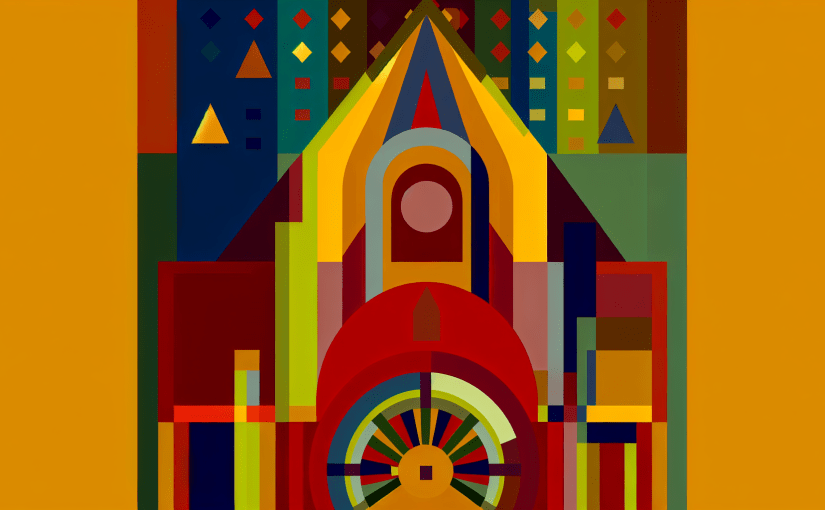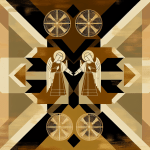Catholic Traditions of Music: A Harmonious Legacy of Faith
Music has a profound ability to express the inexpressible. For centuries, the Catholic Church has embraced music as a dynamic force in worship and community. The Catholic traditions of music are rich, diverse, and deeply intertwined with the faith’s history, providing a spiritual soundtrack that helps believers connect with God and each other. This comprehensive exploration of the music traditions within the Catholic Church will enlighten readers on the significance of hymns, liturgical music, and the role of different musical styles in Catholic worship.
The Historical Roots of Catholic Music
Origins of Sacred Music
Catholic music dates back to the early days of Christianity. The tradition began with the chanting of psalms, inspired by Jewish worship practices. Early Christians adapted the Gregorian chant, named after Pope Gregory I in the 6th century, which remains an essential component of Catholic liturgy. Gregorian chant, characterized by its monophonic and free-flowing melodies, set the stage for more complex developments in sacred music.
Renaissance and Baroque Periods
During the Renaissance and Baroque eras, Catholic music experienced a significant transformation. Composers like Palestrina, Bach, and Mozart contributed to the Sacred repertoire, creating intricate polyphonic settings of the Mass and liturgical texts. This era solidified the importance of music in Catholic worship by emphasizing quality and beauty, aiming to elevate the spiritual experience of the congregation.
The Significance of Liturgical Music
Role in the Mass
One of the primary functions of music in Catholic tradition is its integral role in the Mass. Liturgical music serves to enhance the worship experience, bridging the gap between the divine and the worshippers. The Order of Mass, which outlines the structure of the liturgy, includes various parts where music plays a crucial role, such as the Gloria, the Alleluia, and the Holy Holy (Sanctus).
Hymns and Antiphons
Hymns are a cornerstone of Catholic worship, often sung by the congregation to foster community participation. The ‘responsorial psalm’ is typically chanted or sung after the first reading, allowing the faithful to meditate on the Word of God. Antiphons, another ancient form of liturgical music, are sung at certain times during the Mass, often setting the tone for specific seasons or occasions.
The Evolution of Catholic Music Styles
Traditional vs. Contemporary Styles
The evolution of Catholic music has led to a rich tapestry of musical styles. Traditional sacred music, grounded in Gregorian chant, hymns, and choral works, continues to hold a revered place in the liturgy. Contemporary styles have emerged, combining traditional hymns with modern instruments and innovative arrangements. It is common to see guitars, pianos, and even drums integrate into worship, catering to younger congregations and making Mass more accessible to all.
The Role of Choirs and Music Ministries
Parish choirs and music ministries play a vital role in fostering the Catholic traditions of music. They provide the musical backbone for liturgical celebrations, ensuring that music enhances prayer and worship. Many parishes have engaged choirs that perform choral pieces, often preparing special performances for solemn occasions like Easter, Christmas, and major feasts.
Iconic Catholic Hymns and Compositions
Celebrated Hymns
Catholic traditions of music would not be complete without mentioning some iconic hymns that hold a special place in the hearts of many. Some of the most beloved hymns include “Ave Maria,” “On Eagle’s Wings,” and “Here I Am, Lord.” These hymns have crossed generations, providing comfort and inspiration to countless individuals in their faith journey.
Compositions by Famous Catholic Composers
Several renowned composers have contributed significant works to the Catholic musical tradition. Notable figures include:
- Giovanni Pierluigi da Palestrina: Often considered the father of polyphony, his music is characterized by its clarity and beauty, setting the standard for future generations.
- Johann Sebastian Bach: His sacred works, such as the Mass in B Minor and numerous cantatas, reflect his deep faith and understanding of liturgical music.
- Thomas Tallis: An English composer whose pieces still resonate in churches today, contributing to the richness of Catholic choral music.
The Role of Music in Catholic Life
Music in Catholic Education
Catholic schools play a significant role in cultivating an appreciation for sacred music. Music education programs often include liturgical music, allowing students to learn both the historical context and practical applications. Many students are encouraged to participate in choir or instrumental groups, instilling a lifelong love for the traditions of Catholic music.
Celebrating the Seasons with Music
The liturgical calendar shapes the themes and music used in worship throughout the year. For instance, during Advent, one might hear hymns like “O Come, O Come, Emmanuel,” while during Easter, joyous melodies like “Jesus Christ is Risen Today” echo through the pews. These seasonal hymns not only celebrate the rhythm of the Church year but also enhance the communal worship experience.
The Future of Catholic Music
Embracing Diversity in Worship
As cultural diversity continues to grow within the Catholic Church, so too does the music that reflects this richness. Communities are increasingly incorporating various musical styles and genres, including Latin American, African, and even contemporary pop influences. This inclusivity not only enriches the worship environment but also creates a sense of belonging for all parishioners.
The Impact of Technology
In the modern era, technology has changed the landscape of Catholic music. Online resources, music streaming platforms, and social media have made it easier for parishes to share and access musical compositions. Virtual choirs and online Masses during the COVID-19 pandemic highlighted the importance of adaptability in keeping the communal spirit alive, allowing music to continue playing a significant role in people’s spiritual lives.
Conclusion: A Living Tradition of Faith and Music
The Catholic traditions of music embody a system of beliefs, cultural heritage, and community identity bound together by melody and harmony. As the Church navigates new cultural landscapes and technological advancements, the essence of sacred music remains unchanged—serving as a vehicle for worship, prayer, and connection with the divine.
Music will always be a pivotal part of Catholic worship, inviting congregants to experience the beauty of faith in an extraordinary way. The rich tapestry of hymns, liturgical compositions, and evolving styles will continue to inspire and uplift believers for generations to come, ensuring that the melodies of faith resonate in the hearts of all who gather in worship.




